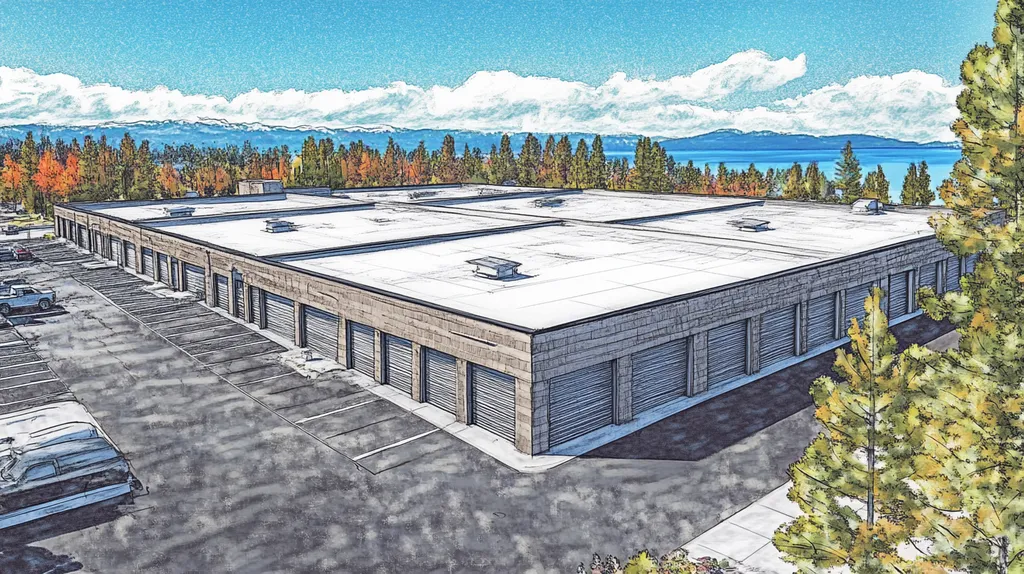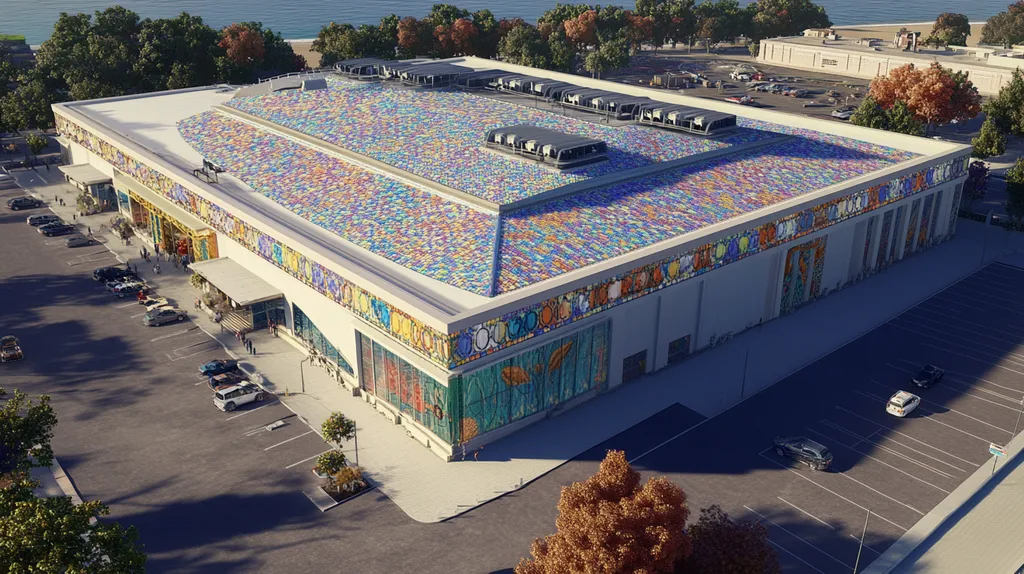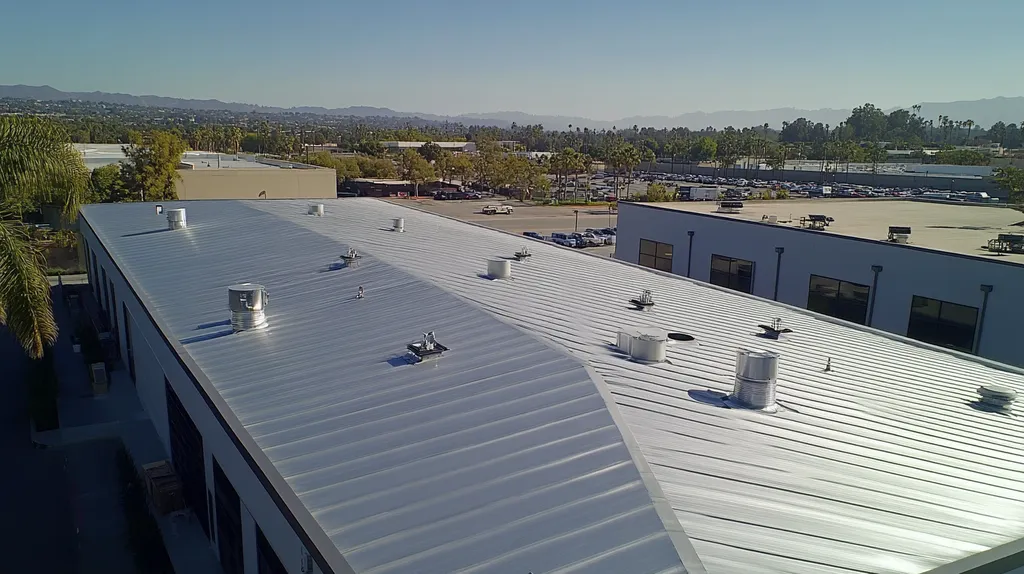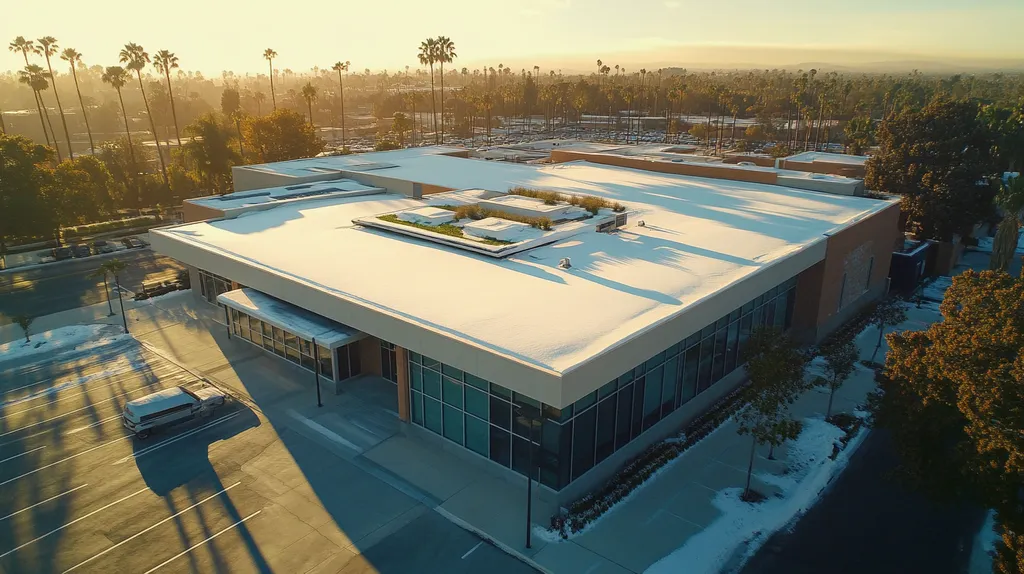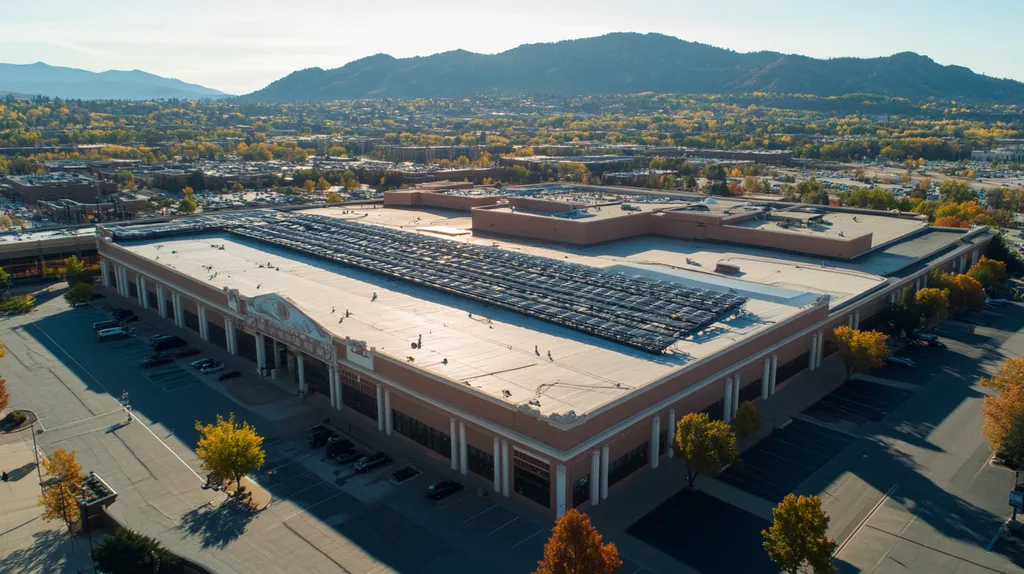Fire risk assessment in commercial roofing remains one of the most misunderstood yet critical aspects of building safety, with over 30% of commercial building fires originating from roofing-related issues.
Despite advances in materials and monitoring technology, property owners continue to make costly assumptions about their roofs’ fire resistance, leading to devastating losses exceeding $1 billion annually.
This comprehensive analysis examines common misconceptions, practical implications, and evidence-based solutions that property owners and facility managers must understand to protect their investments and ensure occupant safety.
SECTION 1: COMMON MISCONCEPTIONS
Assessing fire risk in commercial roofing is not just important—it’s essential. With approximately 30% of commercial building fires originating from roofing-related issues, addressing misconceptions about fire risk is critical for protecting both property and lives. Failing to recognize these misconceptions can lead to dangerous oversight and inadequate risk assessments. By clarifying these misunderstandings, property owners and facility managers can create safer environments and make informed roofing decisions.
Ignoring External Fire Sources
Many property owners mistakenly believe that fire risks stem only from activities within the building. However, external fire sources—such as nearby trees, dry vegetation, or malfunctioning electrical lines—pose considerable threats to the integrity of a commercial roof. This oversight can result in disastrous fires that put lives at risk and result in significant property damage.
A fire in an adjacent building or from external debris can rapidly spread to a commercial roof, particularly in densely populated areas. Such an event can lead to catastrophic consequences if external factors are not factored into the fire risk assessment.
Moreover, the materials used in roof construction play a significant role in shaping fire risk. Some materials contain higher fire resistance compared to others, which is critical for mitigating external flames. A thorough assessment of both internal and external risks, conducted by fire safety professionals, can make all the difference in managing these vulnerabilities effectively.
Overlooking Roof Slope Impact
An often-overlooked factor in assessing fire risk is the slope of the roof. In many cases, property owners assume that roof slope has little effect on fire dynamics. In reality, a flat roof’s design can allow for the accumulation of flammable materials, making it more susceptible to ignition.
On the other hand, steep-sloped roofs can allow fire to spread rapidly along ridges and eaves, presenting their own unique dangers. Understanding how roof design interacts with fire propagation is vital for accurately evaluating potential risks.
The interaction between roofing materials and slope can further complicate fire risk assessments. For example, a highly flammable material on a flat roof presents a distinct danger compared to a fire-resistant option on a steep roof. Evaluating slope during risk assessments aids in making more informed decisions regarding materials and prevention strategies.
Misunderstanding Classifications
A significant barrier to effective fire risk assessment is the misunderstanding of fire ratings and classifications. Many property owners rely on broad categorizations like Class A, B, and C without grasping their real implications. While a Class A rating signifies high fire resistance, it does not equate to complete fire immunity. Misinterpretations of these classifications can mislead property owners about the true safety of their roofing materials.
Additionally, not all materials are tested under the same conditions in real-world applications. Environmental factors like wind and debris can drastically change how a material performs during a fire, which further complicates risk assessments. Neglecting these nuances can lead to misguided choices regarding material selection.
To effectively mitigate fire risk, it is imperative for property managers to fully understand fire classifications and collaborate with certified fire safety professionals. Such partnerships ensure that material selections and roofing strategies align with the best practices for fire hazard management, ultimately promoting safer commercial roofing environments.
SECTION 2: PRACTICAL IMPLICATIONS
The dangers posed by fire risks on commercial roofs cannot be overstated, as they have the potential to result in significant property damage and devastating losses. Each year, the National Fire Protection Association cites nearly $10 billion in property damage attributed to commercial structure fires. Thus, understanding fire spread, the effects of wind, and the materials used in roof decks is essential for property owners and facility managers who aim to reduce these risks effectively.
Fire Spread and Penetration Risks
Potential fire spread on commercial roofs is a significant concern that warrants careful attention. Flammable roofing materials can serve as conduits for flames, with synthetic components like modified bitumen and single-ply membranes being particularly vulnerable to ignition. Once ignited, these materials can enable rapid fire spread across the surface.
Roof design can further complicate this issue. Features such as parapet walls and skylights may trap heat and flames, worsening damage and increasing risks. Therefore, property owners must proactively address these design elements during both installation and maintenance to minimize fire spread hazards.
Additionally, roof penetrations, including vents and HVAC units, can serve as entry points for fire, accelerating its spread. Conducting thorough inspections of these critical areas helps to identify vulnerabilities before they escalate into serious problems.
Proactively opting for fire-resistant roofing materials and incorporating firebreaks into roof designs can significantly diminish these risks. These essential measures not only safeguard the property but also enhance the safety of building occupants and neighboring structures.
Impact of Wind Conditions
Wind conditions are a crucial factor in understanding the fire risk associated with commercial roofs. High winds can transport embers and flames from nearby structures, heightening the chances of ignition. Properties situated in wildfire-prone regions, for example, face increased vulnerability as winds may direct flames onto rooftops with alarming ease.
Moreover, strong winds can hinder firefighting efforts, complicating the situation for responders. This disruption may lead not only to severe damage to the roof but also to the broader building and its surroundings.
Assessing local wind patterns is vital in determining fire risks. Roofing professionals should integrate these conditions into their risk assessments, informing material selection and design decisions that enhance resilience against fire spread during challenging conditions.
Implementing fire-rated barriers and maintaining a clear zone around the building are strategic approaches that can significantly reduce the impact of wind on fire spread. These measures bolster the roof’s defenses against potential ignition sources.
Effects on Roof Deck Materials
The types of materials chosen for roof decking play an instrumental role in the overall fire risk. Common decking materials like plywood and oriented strand board (OSB) are highly combustible, making them quick to ignite and leading to rapid structural failure in the event of a fire. In contrast, opting for non-combustible materials such as steel or concrete offers enhanced fire resistance.
For regions facing heightened fire risks, prioritizing fire-rated roof decks is essential. These materials can slow fire spread, providing valuable time for occupants to evacuate and for firefighting teams to respond effectively.
Additionally, the effectiveness of roof decking during a fire can be compromised by inadequate maintenance. Accumulated debris, such as leaves or vegetation, can ignite and create a serious fire hazard. Regular inspections and cleanings are necessary to maintain fire-safe conditions on roofs.
Ultimately, careful selection of roof deck materials and a commitment to ongoing maintenance will strengthen a building’s safety profile and long-term fire resilience. Investing thoughtfully in these areas yields significant dividends in risk reduction and asset protection.
SECTION 3: COST OF MISINFORMATION
Misunderstandings surrounding fire risk in commercial roofing can lead to significant financial consequences. Property owners who fail to comply with updated fire safety codes may find themselves facing hefty fines. According to recent studies, non-compliance can result in penalties averaging $10,000 per violation. This section examines the serious financial implications of misinformation, focusing on three vital areas: financial penalties, insurance responsibilities, and long-term maintenance costs.
Financial Consequences of Non-Compliance
Disregarding established fire safety standards can incur severe financial penalties. For instance, a commercial facility that doesn’t adhere to fire-resistant roofing guidelines may face fines up to $50,000, contingent on the level of violation. These legal fees can accumulate rapidly, straining a business’s financial resources.
In cases of fire damage, the costs associated with unplanned roof replacements can be astronomical. A single incident could lead to costly operational shutdowns, lost revenue, and additional repair expenses. When financial resources are diverted to address compliance failures, the continuity and stability of the business are at risk.
Moreover, postponing necessary upgrades due to inadequate fire risk assessments can lead to escalating costs. The longer compliance issues remain unaddressed, the more expensive corrective actions will become, especially during inflationary periods in the materials market.
In conclusion, misinformation regarding fire risks in commercial roofing can lead to staggering financial fallout, negatively impacting both direct costs and overall business health.
Insurance and Liability Implications
Insurance providers closely evaluate risks associated with commercial properties when issuing policies. Roofing that does not comply with fire safety standards can result in elevated premiums or outright denial of coverage. Property owners may be surprised to discover that their insurance policies could exclude certain fire-related claims due to non-compliant roofing.
Additionally, the potential for liability claims increases significantly when negligence in fire risk management is involved. Should a fire occur as a result of non-compliance, property owners may find themselves facing lawsuits from affected tenants or neighboring businesses.
It is crucial for property owners to meticulously review their insurance policies. A lack of compliance with fire safety regulations can leave a business exposed not only financially but also legally.
Ultimately, misconceptions about fire risk can create far-reaching implications regarding insurance and liability, potentially costing businesses more than originally anticipated.
Long-Term Maintenance Costs
Fallacies about fire safety can contribute to inadequate maintenance of essential fire prevention measures on commercial roofs. Owners who misunderstand fire risk may opt for short-term solutions that appear cost-effective but ultimately lead to higher long-term expenses.
For example, lower-quality roofing materials might seem budget-friendly initially, but they are often less fire-resistant, resulting in increased repair needs and premature replacements. Such decisions can lead to greater overall maintenance costs over time, affecting a facility’s long-term financial stability.
Furthermore, ongoing inspections and assessments can be neglected if misleading beliefs about fire resistance persist. Regular maintenance is vital for preserving the fire-resistant qualities of roofing systems, and overlooking this necessity may necessitate costly interventions later.
In summary, investing in accurate information about fire risks not only enhances safety but also protects against escalating long-term maintenance costs in the commercial roofing sector.
SECTION 4: REALITY CHECK
Prioritizing fire safety is imperative for property owners and facility managers. With commercial buildings responsible for over 18% of all reported fires, understanding the fire risks tied to roofing materials and construction methods is essential for preventing catastrophic losses. This section delves into critical fire safety standards, the role of building codes, and the necessity of regular inspections to protect commercial roofs effectively.
Understanding ASTM E108 Standards
The ASTM E108 standards are crucial for evaluating the fire resistance of roofing materials. These standards assess how well roofing systems can withstand external fire sources such as embers and flames. Compliance with these standards is often a prerequisite for insurance coverage and plays a significant role in shaping a building’s fire risk profile.
A roof material that achieves a Class A rating, for example, is designed to resist ignition better when exposed to fire, whereas Class C ratings indicate heightened vulnerability and increased potential for fire spread. Property owners should educate themselves about these classifications to make informed selections regarding roofing materials.
Neglecting adherence to ASTM E108 standards can have severe financial implications. In the event of a fire, non-compliance can lead to heightened liability and significant financial losses. Ensuring that roofing materials meet or exceed these standards is indispensable for asset protection.
Ultimately, understanding and implementing ASTM E108 standards is vital for enhancing both fire safety and property security. By utilizing the right materials, commercial buildings can significantly reduce their risk of fire incidents.
Role of Building Codes and Regulations
Building codes are instrumental in bolstering fire safety for commercial roofs. They establish minimum safety standards that property owners must adhere to during construction and renovation phases. Typically, local regulations align with national standards, ensuring consistency across jurisdictions.
Certain roofing materials or configurations may be mandated to meet specific fire-resistance criteria based on local regulations. By ensuring compliance with these codes, property owners not only fulfill legal requirements but also enhance safety standards within their buildings.
Non-compliance with these building codes can result in severe consequences, including fines, legal challenges, and greater insurance premiums. Therefore, it is crucial for anyone involved in property management or ownership to stay informed about local regulations.
Ultimately, understanding the implications of building codes enables property owners to make more informed choices about roofing, reinforcing the importance of safety and compliance in their material selections.
Importance of Regular Inspections
Regular roof inspections are a vital aspect of effective fire risk management. Many roofing materials deteriorate over time, increasing their susceptibility to fire. Routine evaluations can identify potential weaknesses before they manifest into significant problems.
Accumulated debris on rooftops can easily ignite, creating a serious fire hazard. By engaging professionals for routine inspections, property owners can proactively address such issues, thus reducing their overall risk profile. These inspections also ensure that roofing materials continue to comply with fire safety standards.
Many insurance policies require documented inspections to maintain coverage. Failing to conduct these assessments may introduce complications during claims processes in the aftermath of a fire. Therefore, regular inspections are not only a best practice but often a necessity from a financial standpoint.
In summary, regular inspections are crucial not just for aesthetics but as a key component of a comprehensive fire risk management strategy. Property owners need to prioritize these evaluations to ensure their roofs function as a secure barrier against potential fire threats.
SECTION 5: EVIDENCE-BASED ALTERNATIVES
The fire risks associated with commercial roofing are more than a mere concern; they can lead to devastating property loss, threatening both investments and safety. Alarmingly, data indicates that around 80% of commercial building fires ignite on the roof, highlighting the urgent need for preventive measures. Property owners can significantly mitigate these risks by selecting fire-resistant materials, implementing intelligent monitoring systems, and upgrading existing roofing structures. This section delves into these evidence-based alternatives in detail.
Selecting Fire-Resistant Roof Materials
The choice of roofing material plays a pivotal role in shaping a building’s fire risk profile. Fire-resistant options, such as metal roofing or certain modified bitumen products, are essential in preventing flame spread. These materials typically comply with rigorous fire safety standards, providing a crucial barrier in the event of a fire emergency.
Research by the National Fire Protection Association shows that buildings with Class A roofing materials have a significantly lower likelihood of complete destruction in a fire than those using Class C materials. Therefore, investing in high-quality fire-resistant materials enhances safety and strengthens potential insurance claims.
Furthermore, green roofing systems, incorporating fire-retardant plant species, can effectively diminish fire hazards by limiting available fuel. Property owners are encouraged to collaborate with roofing professionals to select compliant materials that align with local regulations.
Conducting regular integrity assessments of the roofing materials can help detect early signs of wear and tear, preserving fire-resistant qualities over time. This proactive measure serves as a cornerstone for effective fire risk reduction.
Implementing Intelligent Monitoring Systems
Intelligent monitoring systems are instrumental in bolstering roof safety against fire threats. These advanced systems can monitor and detect abnormalities such as overheating or smoke, addressing potential hazards before they escalate into serious incidents. Real-time data analysis greatly enhances response times to emerging threats.
For example, thermal imaging cameras installed on rooftops can identify hot spots that may indicate rising temperatures and prevent potential fires from spreading. Quick notifications enable timely interventions, preserving both property and life.
Additionally, Internet of Things (IoT) sensors can monitor environmental conditions—such as wind speed, moisture levels, and temperature fluctuations—affecting fire risks. This data assists facility managers in making informed maintenance and risk mitigation decisions.
While the initial investment in these intelligent technologies may seem substantial, the long-term savings in terms of damage prevention, reduced insurance premiums, and lower liability risks are significant. Furthermore, these systems elevate property value by demonstrating commitment to advanced safety measures.
Upgrading Existing Roofing Systems
Many older roofing systems do not conform to contemporary fire safety standards, leaving them particularly vulnerable to catastrophic events. Upgrading these roofs with modern materials and technologies is critical for mitigating fire risks. Facilities managers should conduct comprehensive assessments of existing roofs to identify potential vulnerabilities.
Replacing outdated roofing with fire-resistant products or retrofitting existing structures by applying protective barriers can be remarkably effective. For instance, the application of fire-retardant coatings enhances the resistance of traditional materials without necessitating a complete roof replacement.
Moreover, upgraded roofing not only bolsters fire safety but also enhances insulation and energy efficiency, offering additional economic benefits. Staying proactive with upgrades ensures that properties remain compliant with evolving safety regulations while improving the overall safety of occupants.
Ultimately, adopting a forward-thinking approach to roofing upgrades reduces fire hazards and can extend the lifespan of the roofing system, securing a sound investment for property owners.
SECTION 6: TEST AND VERIFY
Fire safety is paramount for protecting both assets and lives in commercial buildings. With roofs being a common ignition source, understanding their fire resistance is not only critical but also essential to compliance with safety regulations. According to the National Fire Protection Association, without a thorough risk assessment to comprehend these vulnerabilities, property owners may unknowingly risk devastating losses. This section highlights the significance of rigorous testing and verification processes, guiding property owners and facility managers towards informed and responsible decisions regarding fire risks associated with commercial roofs.
Conducting Simulated Fire Tests
Simulated fire tests serve as a vital tool for evaluating the fire resistance of roofing materials. These controlled tests mimic real-world scenarios to assess how various materials react under extreme heat and fire conditions. For property owners, understanding the results from these evaluations can significantly impact future roofing decisions.
Typically, these tests involve applying flames to roofing materials while observing combustion rates and smoke production. Such data helps categorize roofing systems based on their performance during fire exposure. Insight gained from these evaluations is invaluable for ongoing safety measures.
To ensure the accuracy and reliability of results, it’s critical to use accredited testing facilities that adhere to industry standards. A poorly conducted test can yield misleading information, putting buildings and their occupants at risk.
Furthermore, incorporating regular testing as a part of a comprehensive risk management strategy ensures that older roofing materials continue to meet updated safety standards throughout their lifespan.
Interpreting Test Results and Classifications
Proper interpretation of fire test results is fundamental for effective risk assessments. Test outcomes usually include classifications such as Class A, B, or C, where Class A denotes the highest level of fire resistance suitable for high-risk areas.
However, property managers should not rely solely on these classifications. The underlying data may uncover specific vulnerabilities not immediately apparent in the ratings. For example, even a Class A roof may exhibit weaknesses that could be exploited under certain conditions.
It is also critical to recognize that classifications may change due to evolving building regulations or advancements in roofing technologies. Keeping abreast of these changes is essential for property managers to maintain safe environments.
Hiring professionals to interpret these results can yield deeper insights, leading to strategic upgrades or replacements that enhance safety and protect lives.
Ensuring Compliance with Standards
Compliance with local, state, and national fire safety standards is imperative for safeguarding commercial properties. These regulations establish essential guidelines for roofing practices and are designed to prevent costly fines while ensuring occupant safety.
When selecting roofing materials, it is vital that they conform to these fire safety codes. Property owners should actively request and retain documentation from manufacturers that verify compliance.
Routine inspections and maintenance are also crucial for ensuring that roofing systems remain compliant. Over time, materials can deteriorate, compromising their fire-resistant properties, so ongoing diligence is necessary.
Documenting compliance status through rigorous testing is essential. This record not only demonstrates legal adherence but can serve as a valuable asset during property transactions or insurance negotiations, ultimately enhancing the long-term safety profile of the building.
The Bottom Line
Fire risk assessment in commercial roofing represents a $10 billion annual liability that continues to grow as building materials and technologies evolve.
The evidence demonstrates that over 80% of catastrophic roof failures could have been prevented through proper assessment and compliance with current fire safety standards.
From implementing intelligent monitoring systems to selecting appropriate fire-resistant materials, property owners and facility managers must move beyond outdated assumptions about roofing fire risks.
With insurance providers increasingly scrutinizing fire prevention measures, organizations that fail to adopt evidence-based assessment protocols risk significant financial exposure and potential liability.
The path forward requires a commitment to regular testing, verification of compliance, and investment in modern fire-resistant roofing solutions that protect both assets and lives.
FREQUENTLY ASKED QUESTIONS
Q. What misconceptions exist about commercial roof fire risks?
A. Many property owners incorrectly believe that fire risks only originate from internal activities. External sources like dry vegetation and nearby structures can pose considerable threats. Recognizing these risks is crucial for conducting thorough assessments, ultimately enhancing safety and mitigating potential fire hazards.
Q. How does fire spread affect commercial roofs?
A. Flammable roofing materials can become pathways for flames, leading to rapid fire spread. Features like parapet walls and skylights can trap heat and worsen damage. Property owners must be proactive in addressing these issues to significantly mitigate risks.
Q. What are the financial risks of misjudging fire hazards on industrial roofs?
A. Misunderstanding fire risks can lead to severe financial penalties for non-compliance. Ignoring fire safety standards may also result in costly operational shutdowns, increased insurance premiums, and liability issues in the event of a fire, jeopardizing overall business stability.
Q. How do building codes affect the safety of commercial roofing?
A. Building codes set the minimum safety standards that all roofing materials must meet. Compliance ensures that roofs can withstand fire hazards while protecting occupants. Non-compliance can lead to significant consequences, including fines and heightened insurance costs.
Q. What alternatives help mitigate fire risks for commercial roofs?
A. Property owners can select fire-resistant roofing materials and implement advanced monitoring systems. Upgrading existing roofs to meet modern standards significantly enhances fire safety. Investing in these alternatives can reduce risks and may lead to lower insurance costs over time.
Q. Why is rigorous testing important for assessing commercial roof fire safety?
A. Testing roofing materials under simulated fire conditions provides valuable insights into their performance. Accurate test results help categorize materials by fire resistance, guiding property managers in making informed decisions. Regular testing ensures ongoing compliance with evolving fire safety standards.
Q. What types of regular inspections are essential for commercial roofs?
A. Regular inspections should focus on detecting deterioration, accumulated debris, and overall material integrity. Routine evaluations can proactively identify vulnerabilities, allowing property owners to address issues before they escalate. Additionally, thorough inspections maintain compliance with fire safety standards.

